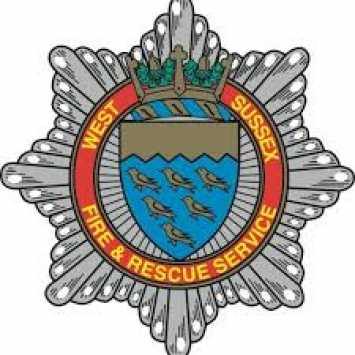West Sussex Fire and Rescue Service Technical Rescue Unit (TRU) based in Horley West Sussex and cover water, at height rope and confined space rescue in the southeast.
Neil, an ex arborist got in touch with us in April 2014 to discuss chainsaw maintenance and crosscutting training and we then had a meeting to explore possible collaboration on tree climbing, aerial rescue and emergency response, and the new emergency treework qualifications.
As an industry we have our own systems for rescue at height as taught on basic tree climbing courses, and have protocols for suspected spinal injury, which is to secure a casualty and await specialist assistance. Obviously there are situations where a rescue might need to go ahead regardless but my view is that our treatment of aerial rescue is rather superficial and sometimes unrealistic – after all when does anyone need rescuing from a convenient fork very near to the ground and main stem………
On our basic tree climbing courses we discuss the options for more complex rescue and how it’s important to consider the difficulty of the tree and the experience and actual climbing ability of the designated rescuer, as well as some pre-planning steps that can make a rescue significantly faster.
On more advanced courses such as rigging, aerial rescue is discussed and occasionally practiced in the context of a pole scenario (since many were assessed under the old City & Guilds NPTC units where this was optional) and the mechanical advantage and rigging principles can be readily applied to a range of problems, including the more complex rescues where the casualty need to be lifted.
Rescue might be split up into the following types, increasing in complexity.
1. Carefully plan but avoid need for rescue – sets up mindset on each job.
2. Climber manages own first aid and descends on own without reference to ground crew.
3. Offer assistance and encouragement from the ground – casualty self rescues
4. Climbing rescue required – simple scenario, pick off
5. More complex rescue required, perhaps a lift or lateral transfer.
6. Rescue too complex or difficult or dangerous – external help required.
So the more complex rescue or a casualty with suspected spinal damage is where external help required, but what is the reality of this happening and how does this fit into the emergency services systems?
In addition I wanted to clarify a few of the points below -
· Are our emergency plans fit for purpose?
· What to ask for when calling 999 apart from the obvious?
· What is their off road capability?
· What happens on site when the emergency services arrive, do they take control, would they accept help from the arb team ?
· How do the Emergency Services perform rescue at height and how can we fit in / help
· What methods would be used to isolate and bring down those with suspected spinal damage?
This meeting presented a great opportunity to collaborate and get some real answers to these questions.
During our first day together I ran through some of the main points covered on a 5 day basic climbing course, from a 3 knot system as well as what intermediate climbers and more advanced arborists might be using such as zigzags & rope wrenches. A basic rescue was also demonstrated, all assisted by Chris Fletcher.
Risk assessment and visual tree assessment were also discussed, as part of the preparation of a site before aerial works commence.
I hope to bring more news of this exciting collaboration that will hopefully have practical benefits feeding through to our training courses.


